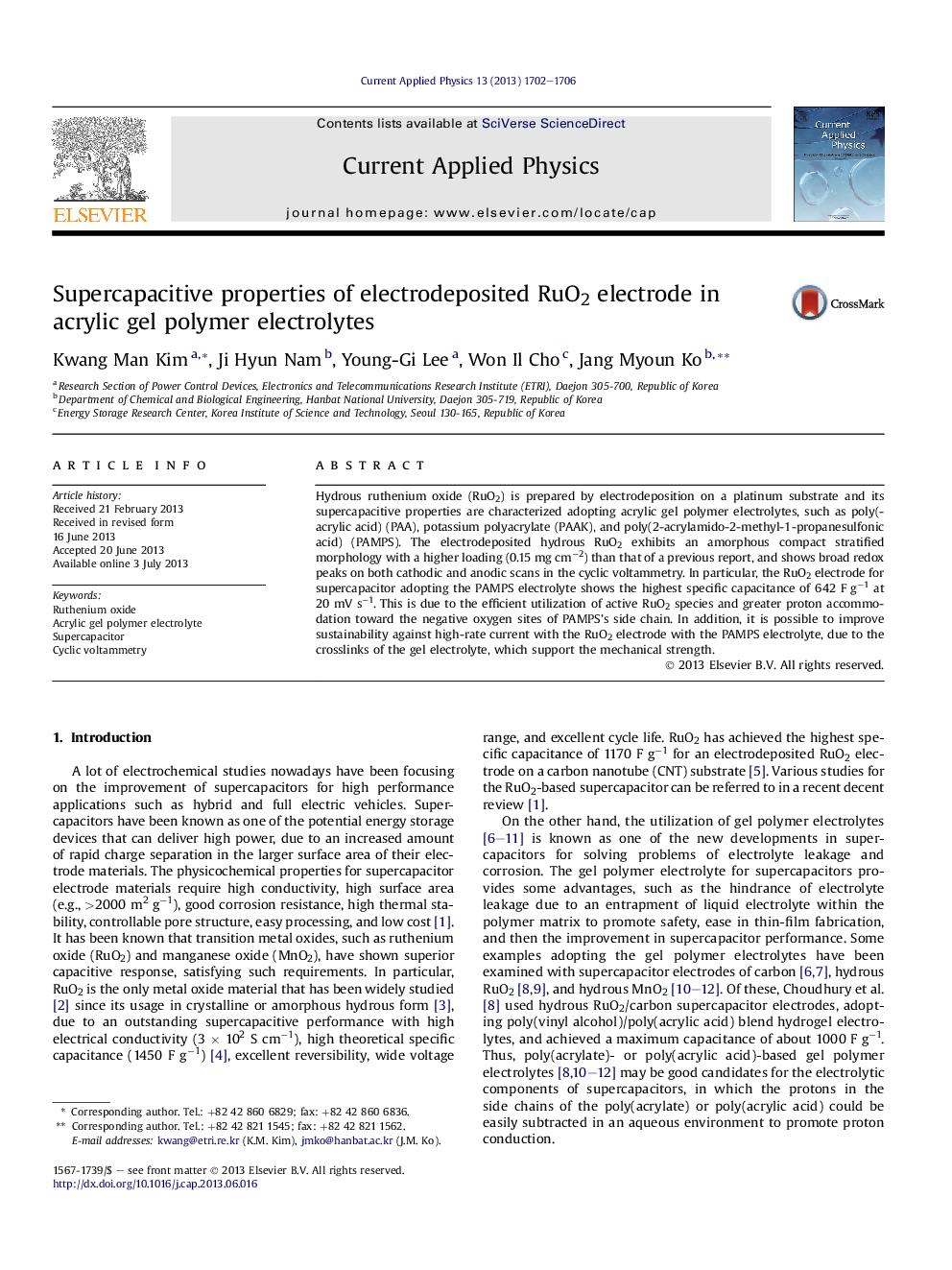| Article ID | Journal | Published Year | Pages | File Type |
|---|---|---|---|---|
| 1785988 | Current Applied Physics | 2013 | 5 Pages |
Abstract
Hydrous ruthenium oxide (RuO2) is prepared by electrodeposition on a platinum substrate and its supercapacitive properties are characterized adopting acrylic gel polymer electrolytes, such as poly(acrylic acid) (PAA), potassium polyacrylate (PAAK), and poly(2-acrylamido-2-methyl-1-propanesulfonic acid) (PAMPS). The electrodeposited hydrous RuO2 exhibits an amorphous compact stratified morphology with a higher loading (0.15 mg cmâ2) than that of a previous report, and shows broad redox peaks on both cathodic and anodic scans in the cyclic voltammetry. In particular, the RuO2 electrode for supercapacitor adopting the PAMPS electrolyte shows the highest specific capacitance of 642 F gâ1 at 20 mV sâ1. This is due to the efficient utilization of active RuO2 species and greater proton accommodation toward the negative oxygen sites of PAMPS's side chain. In addition, it is possible to improve sustainability against high-rate current with the RuO2 electrode with the PAMPS electrolyte, due to the crosslinks of the gel electrolyte, which support the mechanical strength.
Related Topics
Physical Sciences and Engineering
Physics and Astronomy
Condensed Matter Physics
Authors
Kwang Man Kim, Ji Hyun Nam, Young-Gi Lee, Won Il Cho, Jang Myoun Ko,
